TechRadar Verdict
The Huawei Mate 20 distills much of what makes the Mate 20 Pro an excellent phone into something that’s different, though not necessarily inferior. It costs less, offers more screen and has a headphone jack. If you crave the cutting-edge bells and whistles the Pro packs, then look elsewhere. If on the other hand you want utility, big power, great battery and camera performance, the plain-Jane Mate 20 could be just the ticket.
Pros
- +
Excellent battery life
- +
Incredible power for the price
- +
Versatile stills and video camera
Cons
- -
Full HD+ screen resolution is low
- -
IPS screen inferior to flagship AMOLEDs
- -
No IP68 water and dust resistance
Why you can trust TechRadar
Update: After Google suspended Huawei's future access to Android Play Store and security updates, there are serious question marks over the future of Huawei and Honor phones.
While Google and Huawei have promised to support phones currently on the market, it's not clear how long they'll receive Android updates or access to the Google Play Store, which would severely curtail their usefulness compared to the competition.
Since the Mate 9, Huawei has been synonymous with big screens, big batteries and big megapixel counts, and, we’re pleased to report, nothing has changed with its latest flagships: meet the Mate 20 and Mate 20 Pro.
While the pricier Pro variant has the latest cutting-edge tech inside – an in-display fingerprint scanner, a 40MP primary camera sensor and a 2K curved OLED screen, the Mate 20 is actually truer to the heritage of the series.
It has a bigger, flat, IPS screen with Full HD+ resolution, clocking in at 6.53 inches. The rear-mounted fingerprint scanner is very traditionally Huawei, and rather than try and compete head-on with other flagships, it sidesteps luxuries like OLED screen technology in favor of power under the hood and a slightly lower price tag.
Costing €250 less than the Pro (around $285, £220, AU$405) there’s enough of a price difference to justify its existence. The question is, is Huawei just flooding the market with a second-rate handset, or is the regular Mate 20 actually a quality smartphone?
Huawei Mate 20 price and availability
Huawei has confirmed that the Mate 20 will not be coming to the US, with availability having only been confirmed for Europe and Australia. Pricing is also very different depending on the region you buy it in.
Sign up for breaking news, reviews, opinion, top tech deals, and more.
Starting with Europe, the version offering 64GB of storage and 4GB of RAM costs €799 RRP (£705 / $915), while the superior Mate 20 with 128GB and 6GB of RAM costs €849 (£750 / $975).
Meanwhile, in Australia, only the 128GB Mate 20 is available and it costs just AU$1099 outright (about $780 / £600).
Keep your eyes peeled for local pricing announcements. While the euro pricing is a bit steep, the AU pricing is excellent.

Key features
The Mate 20 is powered by the flagship Kirin 980 processor, which is teamed with either 4GB RAM and 64GB internal storage or 6GB RAM and 128GB storage; the storage can be expanded by up to 256GB using Huawei’s new Nano Memory card format. There’s a 4,000mAh battery, and Huawei’s SuperCharge tech, introduced on last year’s Mate 10 series, is onboard, and can get you from 0% to 80% in 45 minutes.
While the Mate 20 Pro version has IP68 water and dust resistance, the regular Mate 20 is IP53-rated, so is only splash-resistant. Like the Pro it’s protected by Gorilla Glass and has a pre-fitted screen protector as well as a soft plastic case in the box.

The 6.53-inch IPS 18.7:9 screen sports a teardrop notch and an 88% screen to bezel ratio. It isn’t the sharpest display around at 381 pixels per inch, but it still looks great, clocking in a significantly higher PPI than the iPhone XR for example, and boasting HDR capabilities.
The cameras are where things get interesting. Sitting somewhere between a mid-ranger and flagship, the new Mate 20 series triple camera system – one ultrawide, one wide and one telephoto – is a first for Huawei. That said, the cameras’ pixel counts are lower than those of the Mate 20 Pro.
Huawei Mate 20 hands on gallery
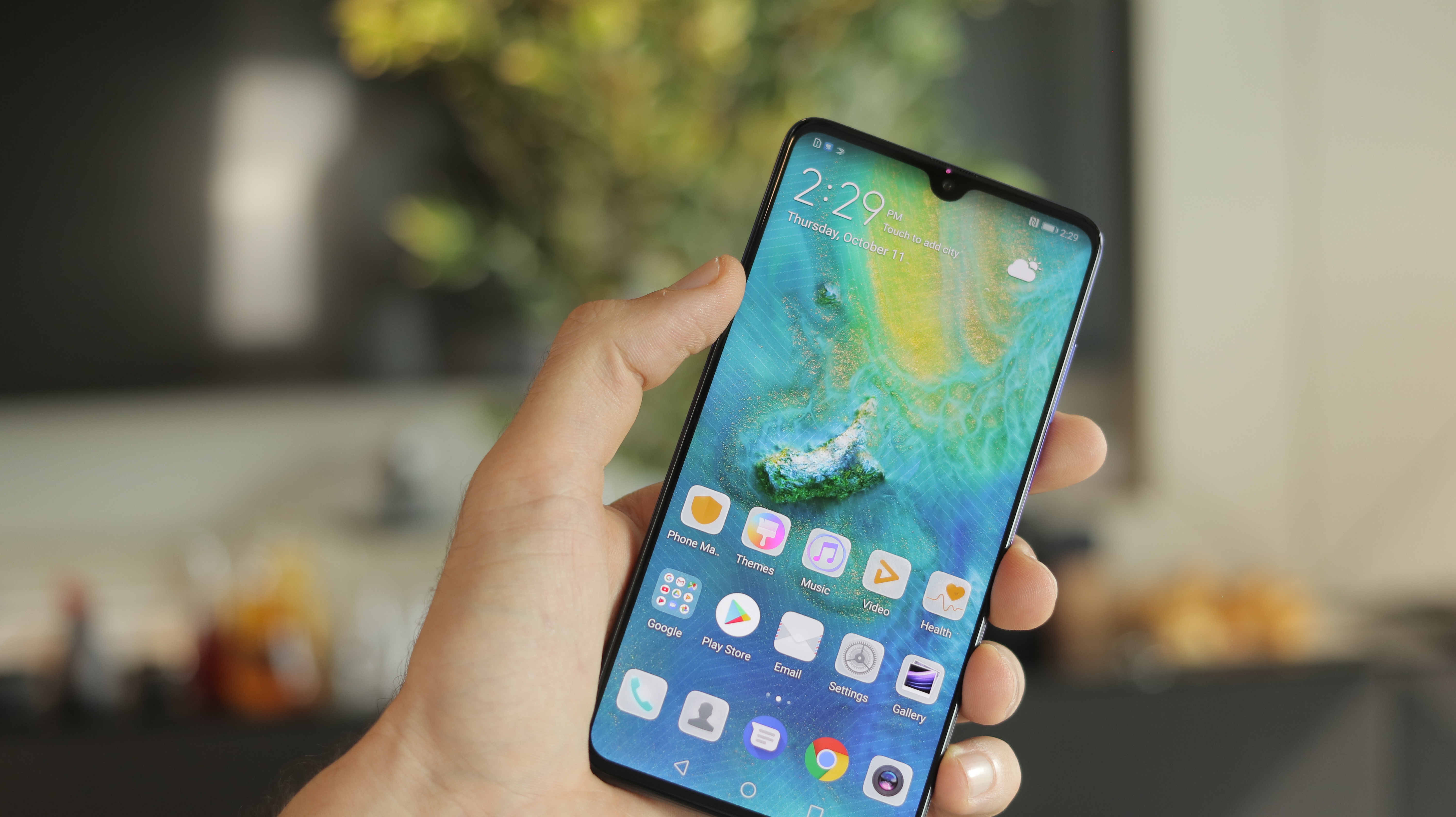

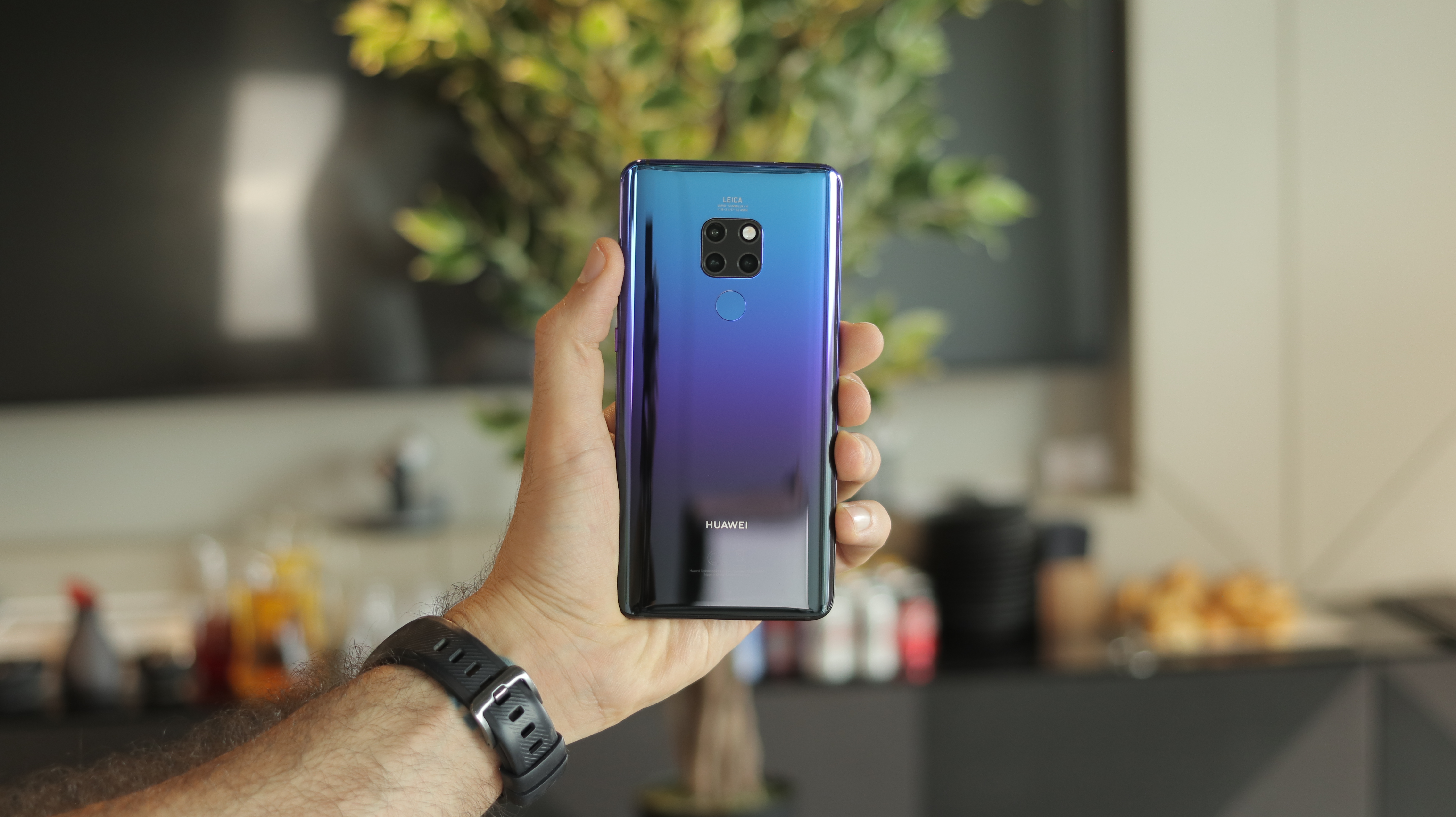
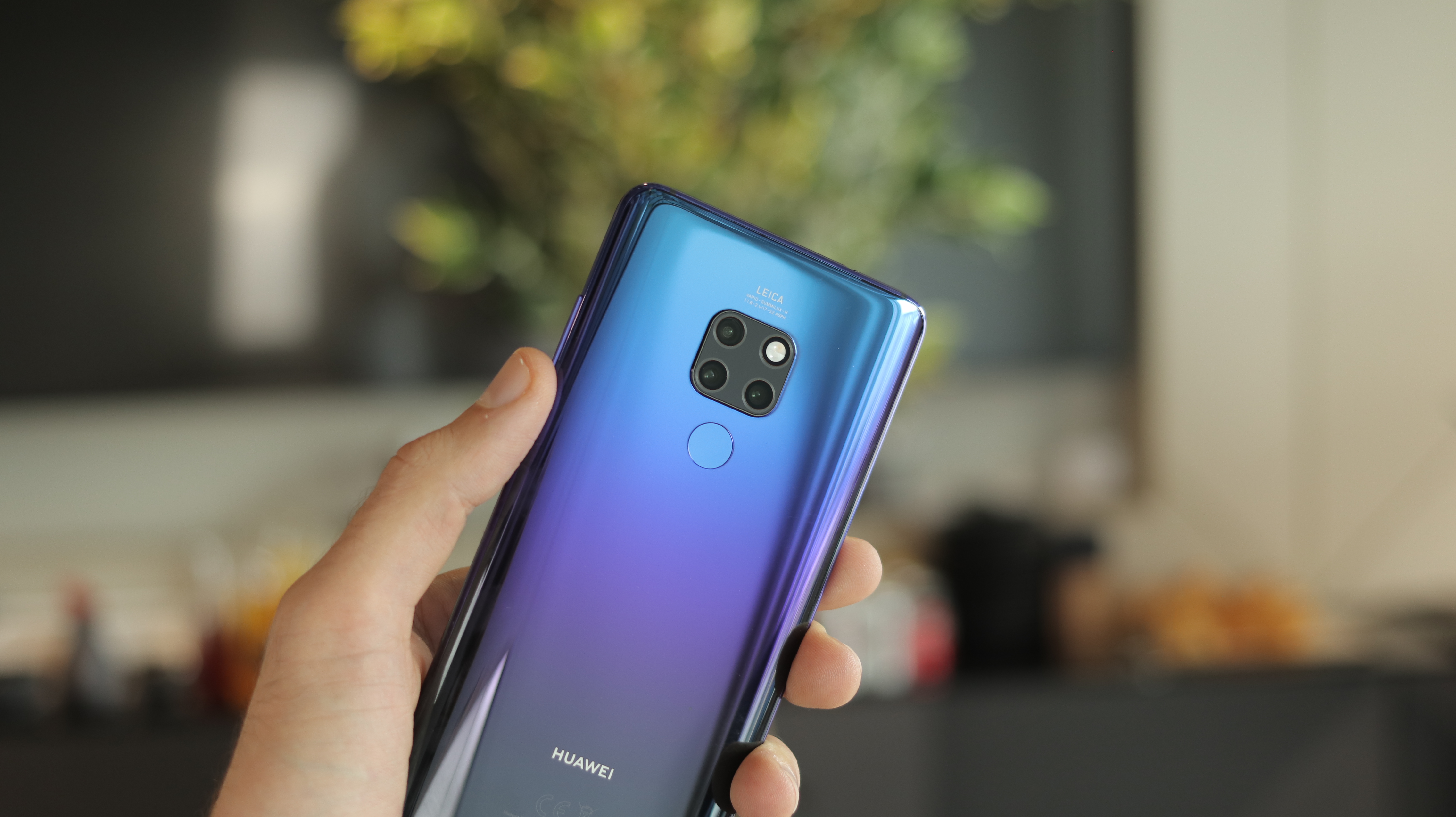



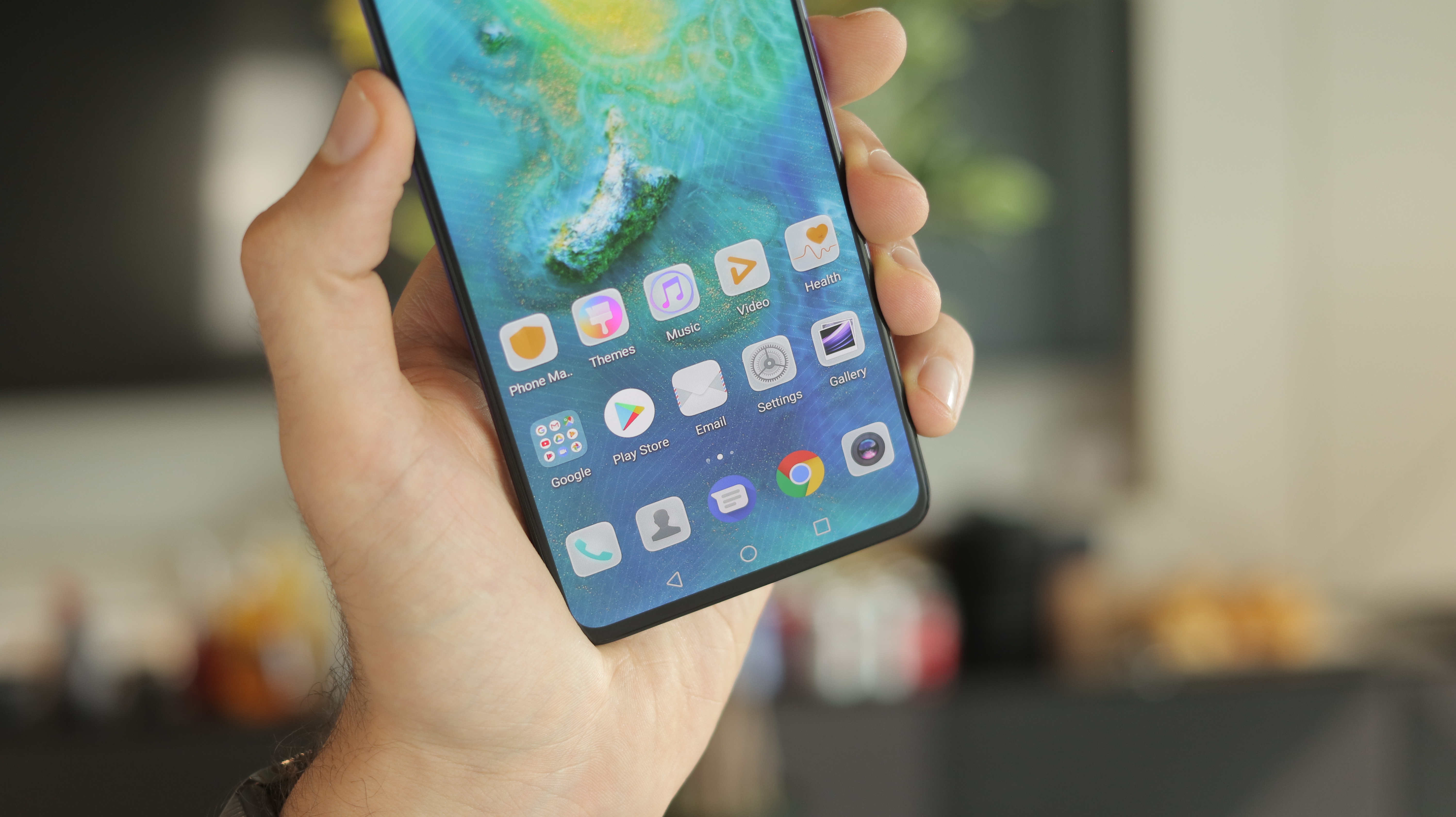
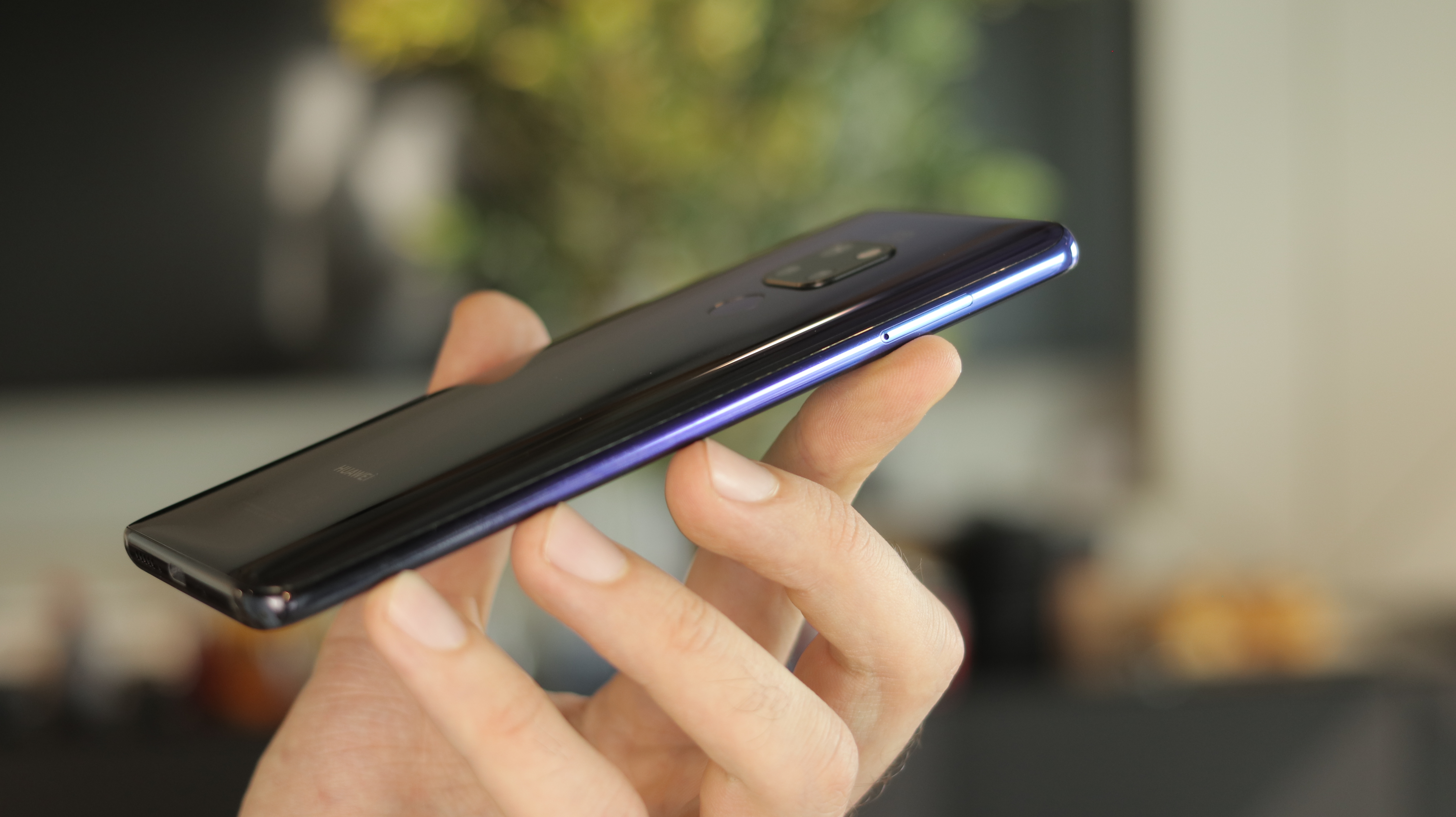


Design
The Essential phone, the upcoming OnePlus 6T, Honor’s 8X Max – all these phones have one thing in common: a ‘teardrop’ or ‘water droplet’ notch.
Now the Mate 20’s name can be added to the list, with the small notch at the top of its 6.53-inch screen housing the 24-megapixel selfie camera. The small size of the notch is the reason the phone sports an impressive 88% screen-to-bezel ratio, which makes for a highly immersive experience when gaming or watching video on this phone.

The big flat display is traditional and functional, making tasks like two-handed typing easier than on curved-screen phones like the Samsung Galaxy S9 Plus and Note 9. That said, it adds width, and this is a wide phone – 3.3mm wider than the Huawei P20 Pro, and 4.9mm wider than the Mate 20 Pro.
Color options include pink gold, midnight blue, emerald green, twilight, and black, with the first two options sporting a Hyper Optical finish. This treatment features striated diagonal lines running across the device’s back, adding grip and repelling fingerprints according to Huawei. It also looks cool – according to us – although so too does the gradient twilight finish on the device we reviewed.
The frame is metal with a high gloss finish, and there’s red accenting and a different, scratchy finish on the power button. This color popping and tactile effect doesn’t just look good, they also make it easy to differentiate the power button from the volume button when thumbing over the phone’s right side.
With a case in the box and a pre-fitted screen protector, other than upping the IP rating there doesn’t seem to be much Huawei could have done to make the Mate 20 more protected out of the box – and indeed, it’s fared well in our time with the device.

Weighing 188g, the Mate 20 is actually lighter than expected, undercutting smaller devices like the Sony Xperia XZ3; it’s also more than 10g lighter than the Note 9 and iPhone XS Max.
It’s also just 8.3mm at its thickest point, so isn’t as beefy as much of the competition, with a tapered edge helping it feel more manageable than its huge screen size would suggest it should.
Other design highlights include a new SIM and NM (Nano Memory) card tray. The latter is Huawei’s newly introduced, proprietary expansion card that’s the size of a nanoSIM, so 45% smaller than SD cards, and which offers up to 256GB capacity and read speeds of 90Mbps. There’s also a rear-mounted fingerprint scanner and a square camera bump, housing three cameras which we’ll look at in much more detail shortly.

Display
The 6.53-inch screen of the Mate 20 is engulfing. Just 12% of the phone’s front is bezel and the notch is tiny, so there really is very little distracting you from your content, and games look stellar.
With a Full HD+ resolution of 1080 x 2244 pixels the screen has a pixel density of 381ppi – that’s the same as found on much cheaper devices like the Honor 8X, but while this doesn’t sound like a great start it’s still sharper than the pricier iPhone XR and looks fantastic, with support for HDR 10 and extensive customization options in the settings.

Talking of the customization options, it makes sense we start with the screen, and Huawei hasn’t cut corners here – this is an excellent display by IPS standards. With a peak brightness of 820 nits brightness it shines bright and it packs depth in its colors, as well as great viewing angles.
Only when you place the Mate 20 next to inky OLEDs like those on the Samsung Galaxy Note 9 and the Mate 20 Pro does it look noticeably less rich, but even then, at no point does it look bad.
In the settings there are a range of options, including an eye comfort mode to filter blue light, color temperature controls, and a feature that adjusts the screen temperature to match the ambient light color, similar to Apple’s True Tone.
Not a fan of notches? Not a problem, you can easily hide this one, although while you might want to do so on a device with a more overbearing notch, like the Google Pixel 2XL, we’re guessing you’ll leave the Mate 20’s minimal cutout intact if you’re anything like us.

Basil Kronfli is the Head of content at Make Honey and freelance technology journalist. He is an experienced writer and producer and is skilled in video production, and runs the technology YouTube channel TechEdit.
